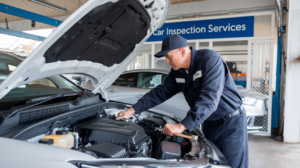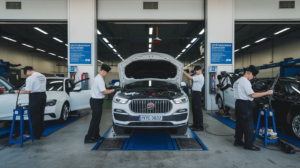Rust does not knock. It creeps in quietly, eating away at frame rails, suspension mounts, and exhaust lines before you even notice. And once it starts, it spreads fast. In places like the UAE, salty coastal air accelerates corrosion. In Pakistan, monsoon floods trap moisture under vehicles for days. That mix? A perfect storm for underbody rust.
This kind of damage is not just cosmetic. It weakens structural components, rattles your exhaust loose, and kills resale value. Worse, it compromises safety. That is why underbody inspection tools matter. They let you see what your eyes cannot see deep inside cavities, behind shields, and into rust-prone zones. Whether you run a workshop or detail cars on the go, these tools are your first line of defense. Rust does not wait. So why should you?
The Science of Rust | What Happens Beneath the Surface
Rust is not just ugly. It is chemistry gone rogue. When steel meets oxygen and moisture, it oxidizes. Add road salt, humidity, or trapped water, and you have a corrosion cocktail. Underbody components, frame rails, control arms, and exhaust hangers are especially vulnerable. They sit low, take constant abuse, and rarely get cleaned properly. Hotspots?
- Inside boxed frame sections
- Around weld seams and suspension mounts
- Near exhaust pipes, where heat accelerates oxidation
- Behind plastic splash guards that trap moisture
And here is the kicker, most of it starts where you cannot see. Visual checks? They are better than nothing, but they miss the deep stuff. Surface rust might look harmless, but what about the rust blooming inside a sealed subframe? Or creeping along the backside of a rocker panel?
That is why underbody inspection tools are game-changers. They go where your eyes cannot. A borescope can snake through tight cavities. A thermal imager spots heat anomalies caused by rust-thinned metal. These tools expose the hidden decay before it becomes a structural nightmare. Traditional methods poking with a screwdriver, guessing based on surface stains, are outdated. If you are serious about rust prevention, you need precision. You need underbody inspection tools that show you the truth beneath the surface.
Rust does not care how clean your car looks. It cares how well you inspect it.
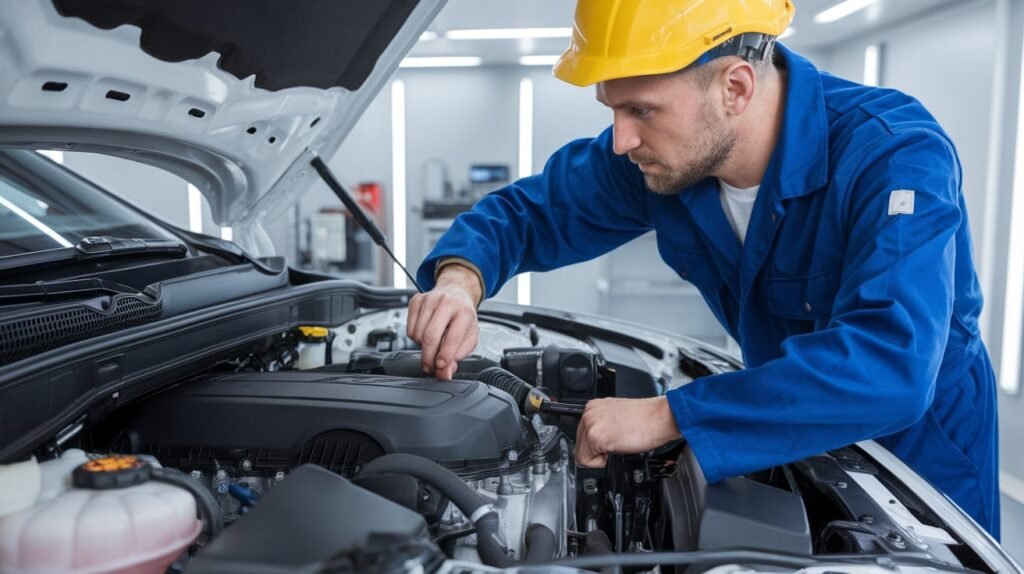
Imaging Revolution | Advanced Underbody Inspection Tools
Rust doesn’t hide, it lurks. And today’s underbody inspection tools are built to expose it.
Forget the flashlight-and-guesswork routine. Modern diagnostics are precise, portable, and brutally honest. Whether you’re a mobile detailer in Dubai or a restoration tech chasing perfection, these tools are your new best friends.
Borescope Cameras
These flexible, lens-equipped probes slide into frame rails, rocker panels, and boxed sections. They reveal internal rust, weld separation, and trapped moisture all without disassembly. Some models even record video, giving you proof for clients or insurance claims.
Thermal Imaging Systems
Rust changes how metal dissipates heat. Thermal cameras detect these anomalies, showing you where corrosion has thinned structural integrity. Ideal for HVAC crossover diagnostics, too — heat loss patterns don’t lie.
High-Definition Angled Lens Setups
Mounted on inspection rigs or handheld arms, these wide-angle lenses capture full-frame rail scans in stunning clarity. Perfect for pre-wrap assessments or post-repair documentation. They turn underbody inspection into visual storytelling.
Smartphone-Compatible Scopes
Portable, affordable, and real-time. These underbody inspection tools plug into your phone, stream live footage, and let you diagnose on the go. Mobile detailers love them, no bulky gear, no downtime. Each tool reveals a different layer of truth:
- Internal rust that hasn’t surfaced yet
- Heat distortion from compromised metal
- Hidden cracks, delamination, and moisture pockets
- The real condition of “clean-looking” components
In a market where trust is earned through transparency, underbody inspection tools are more than gadgets; they’re credibility machines. They let you show, not just tell. And in the battle against corrosion, that’s everything.
If you can’t see it, you can’t fix it. But with the right underbody inspection tools, nothing stays hidden for long.
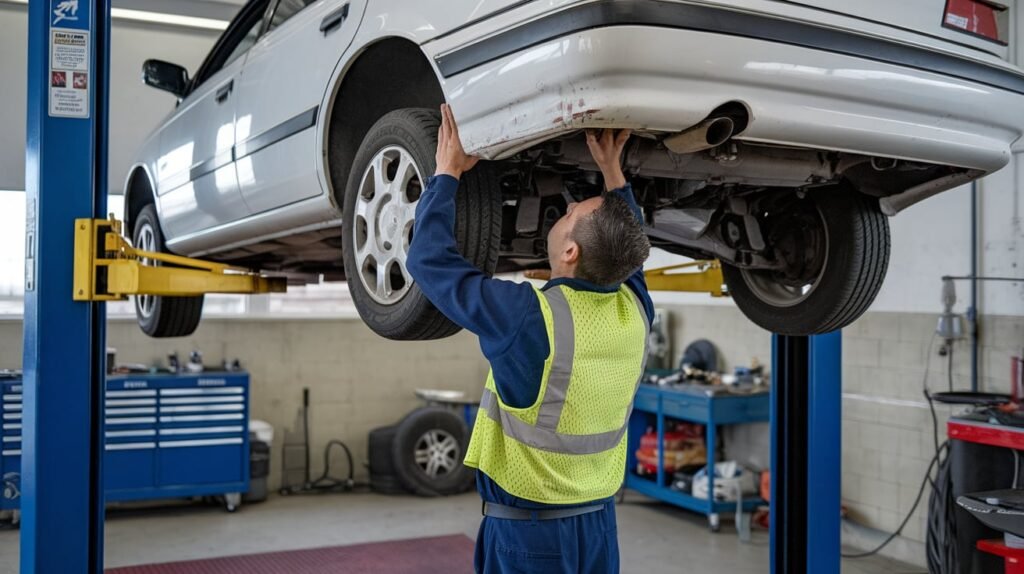
Real-World Applications | Workshops & Mobile Detailing Setups
Underbody inspection tools aren’t just for diagnostics; they’re workflow transformers.
In professional garages and mobile detailing vans, these tools elevate service quality, build client trust, and unlock new revenue streams. Here’s how:
Step-by-Step Rust Mapping in a Professional Garage
- Initial scan with borescope cameras inside frame rails and rocker panels
- Thermal imaging sweep to detect heat anomalies from rust-thinned metal
- HD lens documentation of surface corrosion and weld fatigue
- Cloud-based storage of images and videos for service records
- Client briefing with visual evidence and repair recommendations
This isn’t just inspection, it’s storytelling. And clients respond to what they can see.
Mobile Detailing Van Equipped with Underbody Inspection Tools
A well-equipped van carries:
- Smartphone-compatible scopes for quick diagnostics
- Portable thermal imagers for on-site corrosion checks
- Compact HD lens kits for full underbody scans
These underbody inspection tools turn mobile detailers into trusted advisors. They don’t just clean, they uncover hidden threats and offer solutions.
Documentation & Upselling
Visual proof builds credibility. When clients see rust blooming inside a subframe or heat distortion near a suspension mount, they say yes to preventive treatments.
- Add-ons like rust inhibitors, ceramic coatings, or wrap prep become easier to sell
- Service reports with embedded inspection footage boost transparency
- Cloud integration keeps everything organized and accessible
Case Study| Dubai-Based Detailing Shop
A luxury SUV rolls in spotless exterior, but the client complains of a “metallic rattle.” The shop uses underbody inspection tools to investigate:
- A borescope reveals internal rust near the exhaust hanger
- Thermal imaging shows heat loss along the rear subframe
- HD lens captures surface corrosion around the control arms
The client receives a full visual report, opts for rust treatment, and books a follow-up. Result? A safer vehicle, a happier client, and a reputation for thoroughness.
In today’s market, underbody inspection tools aren’t optional — they’re the difference between good service and unforgettable service.
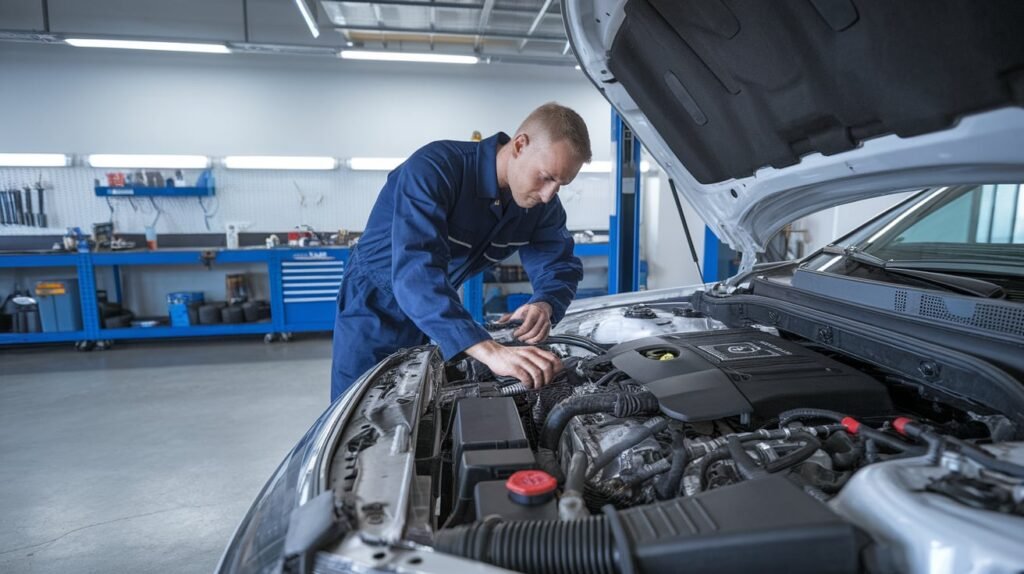
Feature Comparison | Choosing the Right Underbody Inspection Tools
Not all underbody inspection tools are created equal. The right choice depends on your workflow, vehicle type, and the rust risks you’re up against. Here’s a quick breakdown to help you decide:
| Feature | Borescope | Thermal Imaging | HD Lens Setup | Smartphone Scope |
| Resolution | High | Moderate | Ultra-HD | Varies |
| Light Calibration | Manual/Auto | N/A | Advanced | Basic |
| Flexibility | Excellent | Limited | Moderate | High |
| Recording | Yes | Yes | Yes | Yes |
| Best For | Tight spaces | Heat anomalies | Full scans | On-the-go checks |
🔧 Pro Tips for Choosing Underbody Inspection Tools
- Match the tool to the vehicle type: Sedans often need borescopes for tight cavities. SUVs and trucks benefit from HD lens setups for wide-angle rail scans.
- Factor in rust risk: Coastal exposure, road salt, and high humidity demand thermal imaging and deeper diagnostics. These underbody inspection tools catch what surface checks miss.
- Workshop size matters: Large garages can invest in full rigs with mounted HD lenses. Mobile setups thrive with smartphone-compatible scopes and compact borescopes.
- Budget vs. ROI: Don’t just look at price, look at upsell potential. The right underbody inspection tools pay for themselves in client trust and added services.
Whether you’re scanning a luxury SUV in Dubai or prepping a daily driver for wrap installation, the right underbody inspection tools turn guesswork into precision. They’re not just diagnostic devices, as they’re business builders.
Choose wisely. Because the rust you miss today becomes the repair bill tomorrow.
Rust Prevention + Inspection | A Winning Strategy
Rust doesn’t wait. But with the right strategy, neither do you.
Regular use of underbody inspection tools transforms reactive repairs into proactive protection. It’s not just about spotting corrosion, it’s about stopping it before it spreads.
Preventive Rustproofing Starts with Visibility
You can’t protect what you can’t see.
- Borescopes reveal hidden moisture traps
- Thermal imaging detects early-stage oxidation
- HD lenses expose surface corrosion before it flakes
Once identified, you can apply targeted treatments, undercoating, rust inhibitors, and ceramic sprays exactly where they’re needed. No guesswork. No waste.
Timely Repairs = Long-Term Savings
Early detection means:
- Less metal loss
- Fewer part replacements
- Lower labor costs
Underbody inspection tools catch the small stuff before it becomes structural. That’s how smart shops stay ahead and how mobile detailers build loyalty.
Recommended Inspection Intervals
- Every 6 months for vehicles in coastal, humid, or high-salt regions
- Quarterly for commercial fleets or off-road vehicles
- Before and after seasonal changes (especially winter prep and post-salt cleanup)
Routine use of underbody inspection tools keeps your service sharp and your clients protected.
Reputation, Resale, and Real Trust
Clients don’t forget the shop that showed them rust they didn’t know they had.
- Visual reports build transparency
- Preventive treatments boost resale value
- Consistent inspections reinforce safety and care
Underbody inspection tools aren’t just technical assets — they’re trust engines. They prove you care, and that’s what keeps customers coming back.
Rust is silent. Your inspection strategy shouldn’t be.
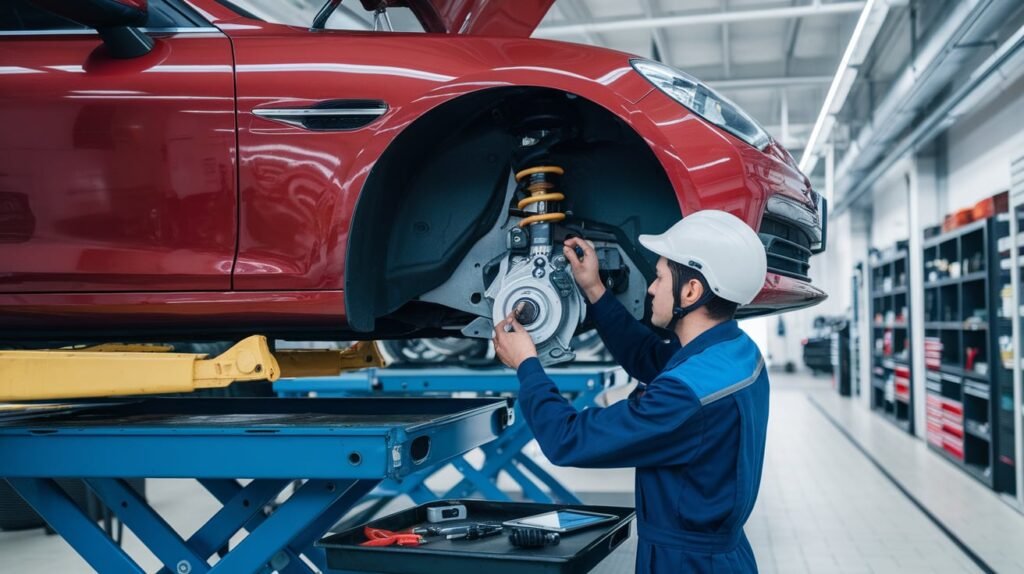
Elevating Vehicle Care Through Technology
Rust doesn’t announce itself. It creeps in quietly, undermining safety, value, and trust. That’s why early detection isn’t a luxury, it’s a responsibility. Underbody inspection tools have redefined what’s possible. They empower technicians to see beyond the surface, diagnose with precision, and act before damage becomes irreversible. For vehicle owners, they offer clarity, confidence, and control over long-term maintenance. From borescopes snaking through frame rails to thermal imagers revealing heat anomalies, these tools are more than diagnostic devices; they’re the backbone of modern vehicle care.
Looking Ahead | The Future of Imaging and Diagnostics
The next wave of underbody inspection tools will be smarter, faster, and more connected:
- AI-assisted corrosion detection
- Cloud-synced service histories
- Augmented reality overlays for technician training
- Integration with predictive maintenance platforms
As imaging evolves, so does trust. And in a market where reputation is everything, the shops and detailers who embrace this tech will lead the way.
Technology doesn’t replace craftsmanship — it elevates it. And with the right tools, rust doesn’t stand a chance.



